The new app is called watchGPT and as I tipped off already, it gives you access to ChatGPT from your Apple Watch. Now the $10,000 question (or more accurately the $3.99 question, as that is the one-time cost of the app) is why having ChatGPT on your wrist is remotely necessary, so let’s dive into what exactly the app can do.
NEWS
Blog Posts That Get 1000 Visits or More Target 76 Keywords
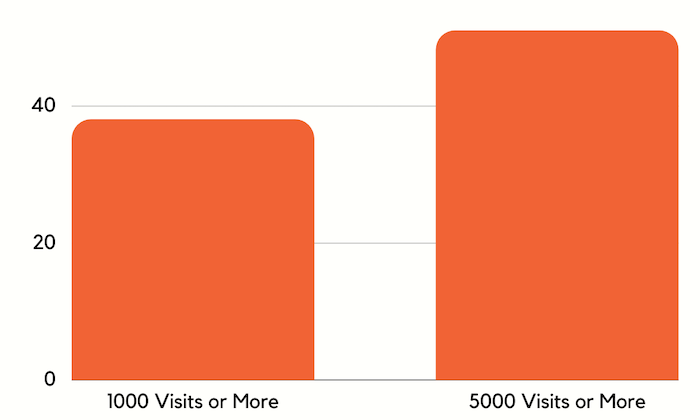
Blogging is a pain.
Not because content is hard to write (worse case you can just hire a writer or agency), but due to the fact that no one can guarantee that your blog post gets read or not.
Just think about it… you spend all this time writing content, but no one can guarantee that it gets seen, shared, or even linked to.
So, I thought it would be fun to analyze popular blog posts and see what common characteristics that they have.
That way you can replicate what they are doing and increase the likelihood that your post gets read.
Now for this study, we deemed a popular blog post as anything that generates at least 1,000 visitors a month from Google organic search (this was based on Ubersuggest data).
We also didn’t exclude any countries and looked at the data from a global level.
Here’s what we learned.
A popular post tends to rank for at least 38 keywords
A big thing in common was that popular blog posts rank for at least 38 keywords.
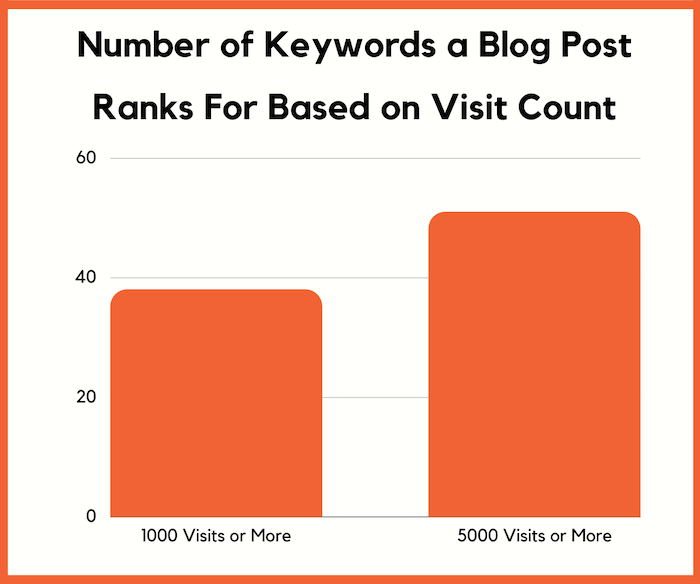
What’s interesting though is posts that generate at least 5,000 visits a month from Google rank for 51 or more keywords.
But the big difference between posts that generate at least 1,000 visitors versus 5,000 wasn’t the number of keywords that they were targeting, it was more so that they were ranking for keywords that were searched on average 984 times a month.
Now granted they didn’t get 984 clicks for each keyword that they ranked for, as no site really gets all the clicks, and there is no guarantee that they were in the number 1 spot.
When looking at this data we decided to dig in a bit more and we randomly picked 300 blog posts that generate at least 1,000 visits a month from Google to see how many keywords they mentioned on their page that contained at least 50 searches a month.
Can you guess what the number was?
Well, after we removed generic one-word terms that aren’t really considered keywords (such as how I mentioned words like “analyze, month, generate, data” within this post but I am not really targeting those keywords), the number comes out to a staggering 76 keywords.
But wait, how do you come up with 76 keywords for every blog post you write?
Before I break down how you can come up with a laundry list of keywords to include in every blog post you write, keep this in mind…
- You should never stuff keywords in a blog post for the sake of getting SEO traffic. Your post should flow and adding the keywords should feel natural. (If you are hiring a writer, a good writer shouldn’t struggle with this.)
- There are outliers and some blog posts generate a lot of traffic without targeting dozens of keywords within their content.
- You shouldn’t write blog posts just for “Google traffic”. If the content doesn’t provide value to the user, it is going to hurt your website rankings in the long run as you can get hit by Google algorithm update if your site is deemed to have low-quality content.
Now that we got that out of the way, you can head to Ubersuggest and follow the steps in the video below to come up with blog post ideas as well as 76 plus keywords per post.
The average blog post that is popular contains 1839 words
Over the years the SEO game has changed. Generally, the longer your content, the more traffic you can get. But there are a lot of edge cases to that rule.
And Google doesn’t really care about word count these days as much as they do for user experience.
See, a user doesn’t really care if a blog post is short or long, they just want to be satisfied with what they have just read.
Nonetheless, we looked at the word count to see what the average post length was for a popular post.
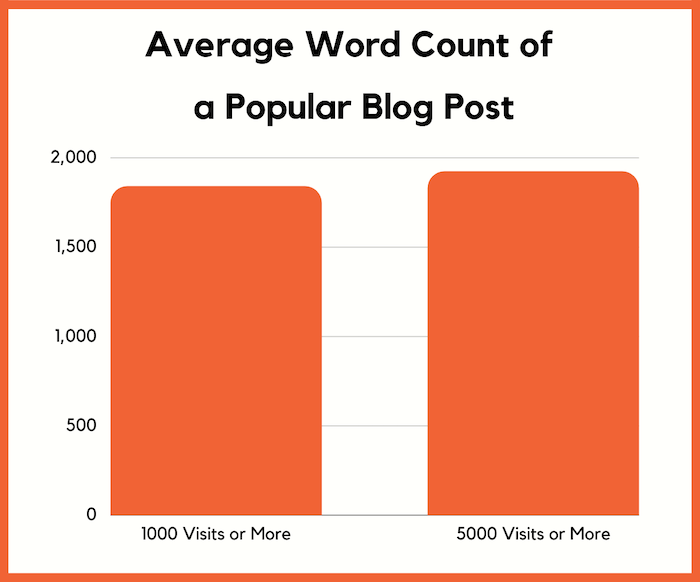
What’s interesting is that posts that generated over 5,000 visitors a month on average weren’t that much longer than posts that generated 1,000 visitors.
The biggest difference was they included more popular keywords within their content. They didn’t necessarily rank for each of those terms, but this gives a post more opportunity to potentially rank and be found.
As I mentioned though, there are always exceptions to the rule. For example, there are popular topics like “how to tie a tie” and you don’t really need tons of words to explain how to tie a tie. You more so need images or even video.
Blog posts that are popular are somewhat new
When we looked at every popular blog in our database, we noticed that a lot of sites didn’t include a publish date or an updated date (updated date is used for content that was originally published years ago but was more recently updated).
But for the posts that did contain a date, whether it was the publication date or when the content was updated, we did notice something interesting.
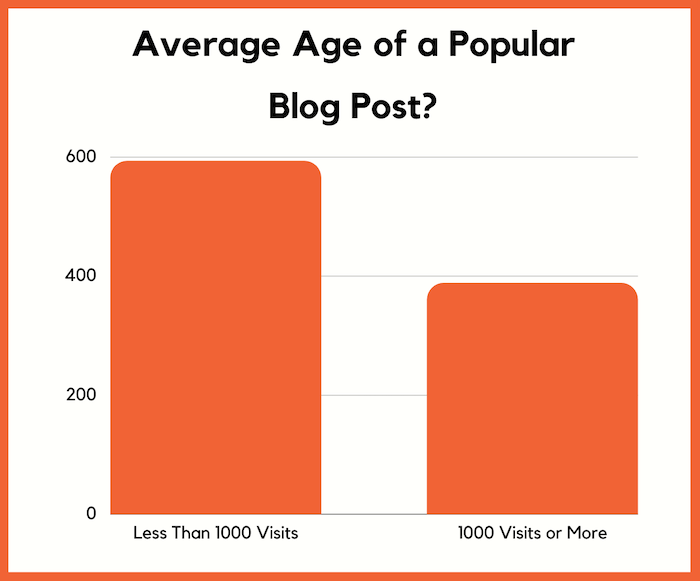
Content that generates 1,000 visitors or more a month on average tends to be 388 days old.
And content that generates less than 1,000 visitors tends to be 593 days old.
This doesn’t mean that Google doesn’t want to rank new, fresh content as in both categories there was fresh, new content that did generate traffic. But a lot of the ranking blog posts were a bit old (but not too old).
Again, keep in mind there are always exceptions to the rule. Going back to the how to tie a tie example, even if that article was 3 years old, it probably would still be relevant as much hasn’t changed when it comes to ties.
But with over 1 billion blogs on the web, it seems like Google prefers newish content over outdated content.
If you have older content, don’t worry, you can always update it to ensure that it continually gets more traffic.
The way you would do this is by following these steps:
It’s so effective that I have a team of people who just update my old content.
Conclusion
Whether you like it or not, if you are going to write content you should do keyword research first.
Picking the right keywords versus the wrong ones can mean that your content doesn’t get traffic or gets thousands of visitors a month.
Now of course there are other elements to your SEO like links and on-page SEO, but for this analysis, we wanted to focus on the characteristics (ones that you can easily control) that make a popular post.
Out of curiosity, do you do keyword research before you write content?
See How My Agency Can Drive Massive Amounts of Traffic to Your Website
- SEO – unlock massive amounts of SEO traffic. See real results.
- Content Marketing – our team creates epic content that will get shared, get links, and attract traffic.
- Paid Media – effective paid strategies with clear ROI.
Facebook Faces Yet Another Outage: Platform Encounters Technical Issues Again

Uppdated: It seems that today’s issues with Facebook haven’t affected as many users as the last time. A smaller group of people appears to be impacted this time around, which is a relief compared to the larger incident before. Nevertheless, it’s still frustrating for those affected, and hopefully, the issues will be resolved soon by the Facebook team.
Facebook had another problem today (March 20, 2024). According to Downdetector, a website that shows when other websites are not working, many people had trouble using Facebook.
This isn’t the first time Facebook has had issues. Just a little while ago, there was another problem that stopped people from using the site. Today, when people tried to use Facebook, it didn’t work like it should. People couldn’t see their friends’ posts, and sometimes the website wouldn’t even load.
Downdetector, which watches out for problems on websites, showed that lots of people were having trouble with Facebook. People from all over the world said they couldn’t use the site, and they were not happy about it.
When websites like Facebook have problems, it affects a lot of people. It’s not just about not being able to see posts or chat with friends. It can also impact businesses that use Facebook to reach customers.
Since Facebook owns Messenger and Instagram, the problems with Facebook also meant that people had trouble using these apps. It made the situation even more frustrating for many users, who rely on these apps to stay connected with others.
During this recent problem, one thing is obvious: the internet is always changing, and even big websites like Facebook can have problems. While people wait for Facebook to fix the issue, it shows us how easily things online can go wrong. It’s a good reminder that we should have backup plans for staying connected online, just in case something like this happens again.
NEWS
We asked ChatGPT what will be Google (GOOG) stock price for 2030

Investors who have invested in Alphabet Inc. (NASDAQ: GOOG) stock have reaped significant benefits from the company’s robust financial performance over the last five years. Google’s dominance in the online advertising market has been a key driver of the company’s consistent revenue growth and impressive profit margins.
In addition, Google has expanded its operations into related fields such as cloud computing and artificial intelligence. These areas show great promise as future growth drivers, making them increasingly attractive to investors. Notably, Alphabet’s stock price has been rising due to investor interest in the company’s recent initiatives in the fast-developing field of artificial intelligence (AI), adding generative AI features to Gmail and Google Docs.
However, when it comes to predicting the future pricing of a corporation like Google, there are many factors to consider. With this in mind, Finbold turned to the artificial intelligence tool ChatGPT to suggest a likely pricing range for GOOG stock by 2030. Although the tool was unable to give a definitive price range, it did note the following:
“Over the long term, Google has a track record of strong financial performance and has shown an ability to adapt to changing market conditions. As such, it’s reasonable to expect that Google’s stock price may continue to appreciate over time.”
GOOG stock price prediction
While attempting to estimate the price range of future transactions, it is essential to consider a variety of measures in addition to the AI chat tool, which includes deep learning algorithms and stock market experts.
Finbold collected forecasts provided by CoinPriceForecast, a finance prediction tool that utilizes machine self-learning technology, to anticipate Google stock price by the end of 2030 to compare with ChatGPT’s projection.
According to the most recent long-term estimate, which Finbold obtained on March 20, the price of Google will rise beyond $200 in 2030 and touch $247 by the end of the year, which would indicate a 141% gain from today to the end of the year.
Google has been assigned a recommendation of ‘strong buy’ by the majority of analysts working on Wall Street for a more near-term time frame. Significantly, 36 analysts of the 48 have recommended a “strong buy,” while seven people have advocated a “buy.” The remaining five analysts had given a ‘hold’ rating.
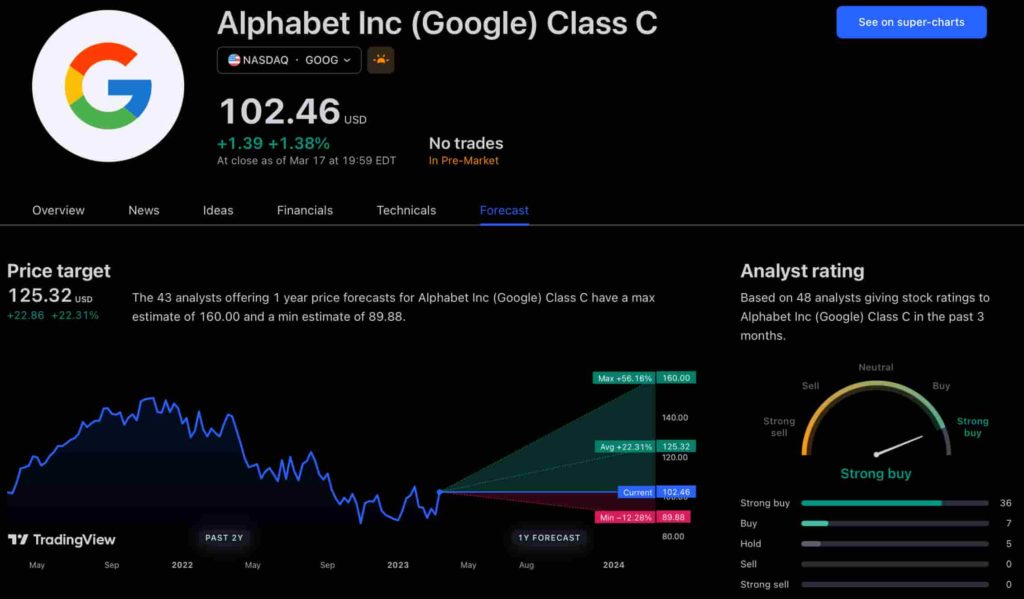
The average price projection for Alphabet stock over the last three months has been $125.32; this objective represents a 22.31% upside from its current price. It’s interesting to note that the maximum price forecast for the next year is $160, representing a gain of 56.16% from the stock’s current price of $102.46.
While the outlook for Google stock may be positive, it’s important to keep in mind that some potential challenges and risks could impact its performance, including competition from ChatGPT itself, which could affect Google’s price.
Disclaimer: The content on this site should not be considered investment advice. Investing is speculative. When investing, your capital is at risk.
NEWS
This Apple Watch app brings ChatGPT to your wrist — here’s why you want it

ChatGPT feels like it is everywhere at the moment; the AI-powered tool is rapidly starting to feel like internet connected home devices where you are left wondering if your flower pot really needed Bluetooth. However, after hearing about a new Apple Watch app that brings ChatGPT to your favorite wrist computer, I’m actually convinced this one is worth checking out.
-

 MARKETING7 days ago
MARKETING7 days agoRoundel Media Studio: What to Expect From Target’s New Self-Service Platform
-

 SEO6 days ago
SEO6 days agoGoogle Limits News Links In California Over Proposed ‘Link Tax’ Law
-
SEARCHENGINES7 days ago
Daily Search Forum Recap: April 12, 2024
-

 SEARCHENGINES5 days ago
SEARCHENGINES5 days agoGoogle Core Update Volatility, Helpful Content Update Gone, Dangerous Google Search Results & Google Ads Confusion
-

 SEO5 days ago
SEO5 days ago10 Paid Search & PPC Planning Best Practices
-

 MARKETING6 days ago
MARKETING6 days ago2 Ways to Take Back the Power in Your Business: Part 2
-

 SEARCHENGINES4 days ago
SEARCHENGINES4 days agoWeekend Google Core Ranking Volatility
-

 MARKETING4 days ago
MARKETING4 days ago5 Psychological Tactics to Write Better Emails














